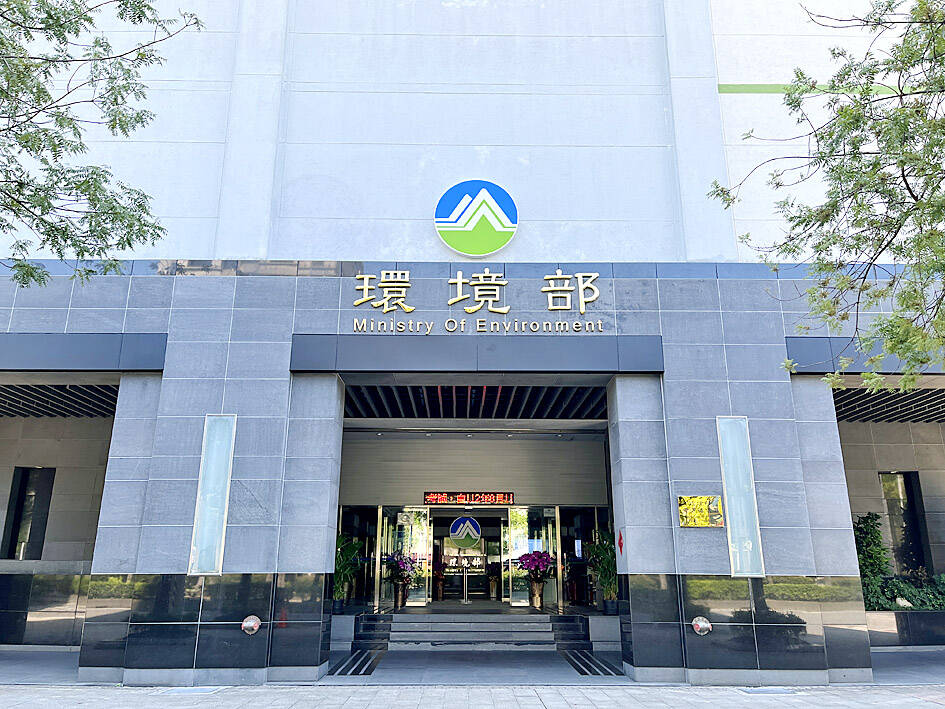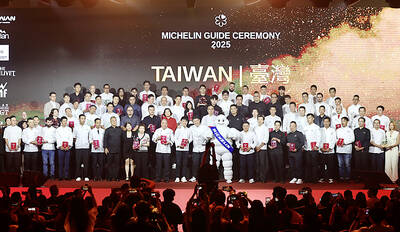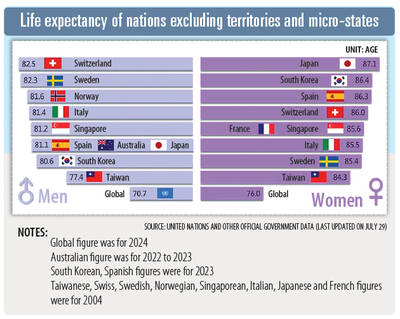The Ministry of Environment on Wednesday unveiled a carbon fee charging method that diverges significantly from what was widely expected and is less stringent on big emitters, attracting immediate criticism from environmental groups.
Climate Change Administration (CCA) Director-General Tsai Ling-yi (蔡玲儀) met with representatives from civil environmental groups at an event held by the CCA in Taipei on Wednesday.
At the meeting, Tsai said the carbon fee to be paid next year by big emitters would be their total emissions minus 25,000 tonnes of carbon dioxide equivalent (tCO2e), multiplied by the carbon fee rate (Carbon fee = (emissions - 25,000) x fee rate)).

Photo: Chen Chia-yi, Taipei Times
This came as a surprise to many of those in attendance as it had been expected that the carbon fee formula would be the fee rate multiplied by the whole amount of the carbon dioxide equivalent emitted for big emitters (Carbon fee = emissions x fee rate).
The CCA on Friday last week released the tentative outline of Taiwan’s future carbon pricing structure to be reviewed by stakeholders ahead of the publication of an official draft.
The tentative outline showed the carbon fee formula as total emissions multiplied by the carbon fee rate.
Big emitters were defined as companies whose direct and indirect annual emissions exceed 25,000 tonnes, the tentative outline shows. They were to pay carbon fees starting in 2025 based on their emissions measured this year.
An estimated 512 companies in the electricity, iron and steel, oil refining, cement, semiconductors, thin-film transistor LCD industries and all companies with direct fossil fuel emissions exceeding the 25,000-tonne threshold were to be subject to fees, the CCA said.
Wednesday’s newly publicized information amounts to granting big emitters “free allowances,” wholly at odds with what had been expected before Wednesday.
Tsai explained that the newly proposed formula is to prevent emitters from trying to avoid paying carbon fees entirely by reducing emissions to just below the 25,000 threshold.
There would have been a big difference between an emitter with 24,900 tonnes and one with 25,000 tonnes, which would have increased the incentive for companies to circumvent the regulations, Tsai said.
Based on Wednesday’s formula, carbon fees would exert insufficient pressure on companies to decarbonize, an Environmental Rights Foundation representative said.
For example, a 26,000-tonne emitter will now only have to pay NT$300,000 (US$9,672.43) if the carbon fee rate is set at NT$300 per tonne, much lower than the previously expected NT$7.8 million, the representative said.
The Society of Wilderness representative said if decarbonization is the country’s top priority, it is doubtful the current plan would make much of a contribution to ensuring firms work toward that goal.
The director-general said that of the estimated 512 big emitters, those responsible for most of the country’s emissions emit several million tonnes per year, and to them, the emission of “25,000 tonnes is like single digits.”
On the other hand, many small companies have total emissions per year of 25,000, 30,000 or 40,000 tonnes, mostly from electricity use, she added.
Such small businesses would be incentivized to use electricity more efficiently or use renewable energy if their annual emissions are only slightly above the fee threshold, Tsai said.
The CCA released the tentative outline as a pre-draft of an official draft of the regulations on Friday last week as this would allow for “wider communication with society and create a more solid consensus,” CCA Deputy Director-General Huang Wei-ming (黃偉鳴) said.
The meeting on Wednesday was the first roundtable discussion intended to facilitate wider communication.
In March last year, Chang Tzi-chin (張子敬), then-head of the Environmental Protection Administration (EPA), which was upgraded to the ministry in August last year, said about 289 big emitters collectively emitted 233.873 million tCO2e in 2021, accounting for about 82 percent of the country’s emissions.
The electricity utility companies accounted for most emissions at about 54.3 percent of the 233.873 million tCO2e, Chang said.
A report publicized by the Risk Society and Policy Research Center in June and based on information provided by the EPA, found that the top 30 enterprise-emitters, excluding electricity suppliers, emitted a total of 132.292 million tCO2e (including indirect emissions from electricity use) in 2021.
This included 10 from the petrochemical industry (49.06 percent), seven from the electronic components manufacturing sector (14.91 percent, five from the semiconductor industry and two LCD firms), five iron and steel companies (25.99 percent), four papermaking enterprises (2.8 percent), two cement firms (6.11 percent), one textile company and one glass enterprise.

Eight restaurants in Taiwan yesterday secured a one-star rating from the Michelin Guide Taiwan for the first time, while three one-star restaurants from last year’s edition were promoted to two stars. Forty-three restaurants were awarded one star this year, including 34 in Taipei, five in Taichung and four in Kaohsiung. Hosu (好嶼), Chuan Ya (川雅), Sushi Kajin (鮨嘉仁), aMaze (心宴), La Vie by Thomas Buhner, Yuan Yi (元一) and Frassi in Taipei and Front House (方蒔) in Kaohsiung received a one-star rating for the first time. Hosu is known for innovative Taiwanese dishes, while Chuan Ya serves Sichuan cuisine and aMaze specializes

STATS: Taiwan’s average life expectancy of 80.77 years was lower than that of Japan, Singapore and South Korea, but higher than in China, Malaysia and Indonesia Taiwan’s average life expectancy last year increased to 80.77 years, but was still not back to its pre-COVID-19 pandemic peak of 81.32 years in 2020, the Ministry of the Interior said yesterday. The average life expectancy last year increased the 0.54 years from 2023, the ministry said in a statement. For men and women, the average life expectancy last year was 77.42 years and 84.30 years respectively, up 0.48 years and 0.56 years from the previous year. Taiwan’s average life expectancy peaked at 81.32 years in 2020, as the nation was relatively unaffected by the pandemic that year. The metric

Taitung County is to launch charter flights to Malaysia at the end of this year, after setting up flights to Vietnam and Thailand, the Taitung County Government said yesterday. The new charter flight services, provided by low-cost carrier Batik Air Malaysia, would be part of five-day tour packages for visits to Taitung County or Malaysia. The Batik Air charter flight, with about 200 seats, would take Malaysian tourists to Taitung on Dec. 30 and then at 12:35pm return to Kuala Lumpur with Taiwanese tourists. Another charter flight would bring the Taiwanese home on Jan. 3 next year, arriving at 5:30pm, before taking the

Taiwan High Speed Rail Corp. (THSRC) plans to ease strained capacity during peak hours by introducing new fare rules restricting passengers traveling without reserved seats in 2026, company Chairman Shih Che (史哲) said Wednesday. THSRC needs to tackle its capacity issue because there have been several occasions where passengers holding tickets with reserved seats did not make it onto their train in stations packed with individuals traveling without a reserved seat, Shih told reporters in a joint interview in Taipei. Non-reserved seats allow travelers maximum flexibility, but it has led to issues relating to quality of service and safety concerns, especially during